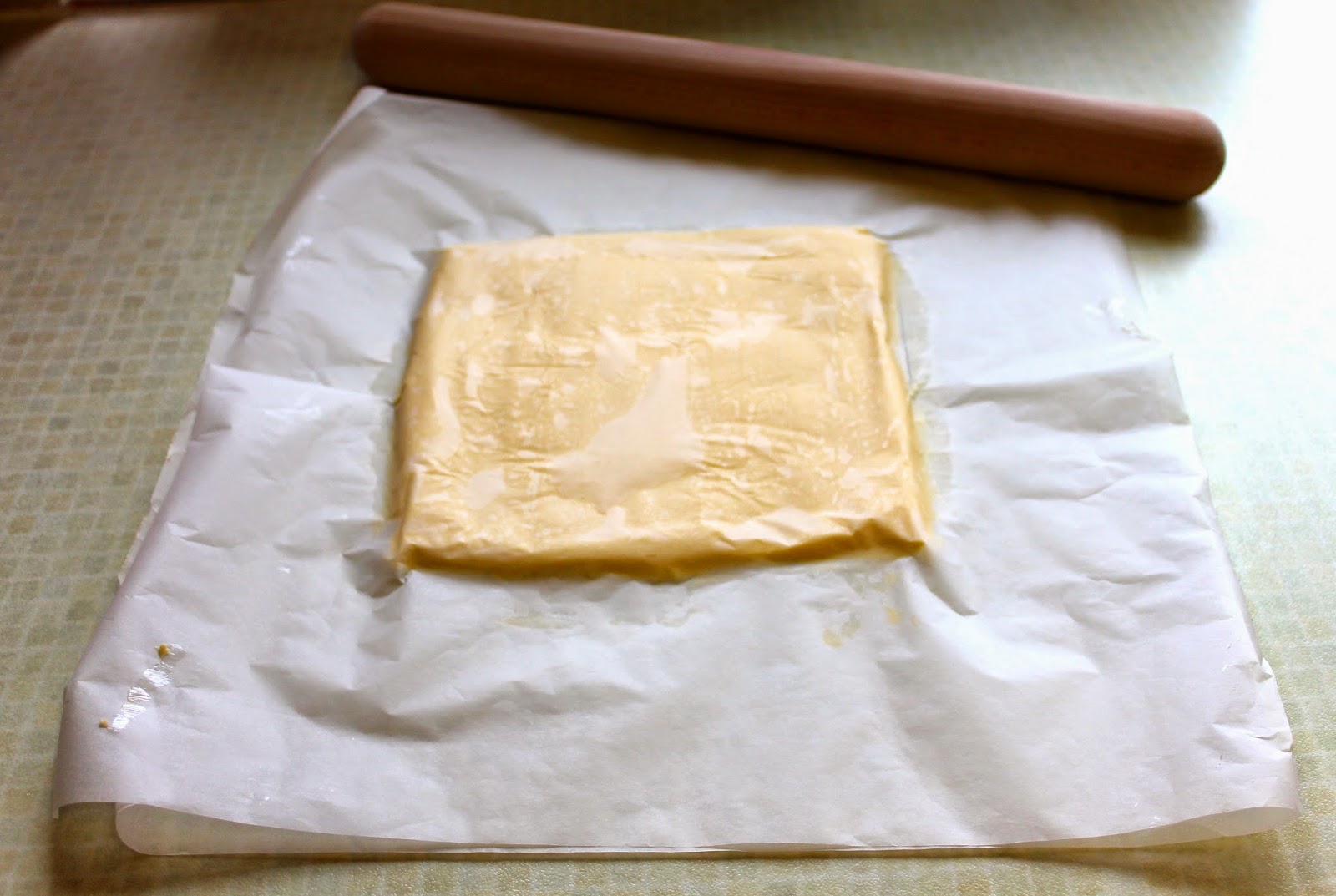This week's Technical Challenge on GBBO seemed to be more of a psychological test rather than one that demanded an in-depth knowledge of millions of different skills and an ability to work under extreme time constraints.
Having to wait around for hours as dough rose and repeatedly chilled in the fridge was a real test of my patience, but it's definitely worth it in the end as these pastries went down a treat! Originating in Breton, France, in the 1800s Kouign Amann (pronounced QUEEN-ah-mahn) contain layers of butter and sugar folded into a yeast dough, making incredibly sweet individual flaky pastries.
Ingredients:
300g strong plain flour, plus extra for dusting
5g fast-action yeast
1 tsp salt
200ml warm water
25g unsalted butter, melted
250g cold unsalted butter, in a block
100g caster sugar, plus extra for sprinkling
Method:
Put the flour into the bowl of a freestanding mixer fitted with a dough hook. Add the yeast to one side of the bowl and the salt to the other.
Add the water and melted butter and mix on a slow speed for 2 minutes, then on a medium speed for 6 minutes.
Tip the dough onto a lightly floured work surface and shape into a ball.
Put into a lightly oiled bowl, cover with cling film and leave to rise for one hour.
Sandwich the butter between 2 sheets of greaseproof paper and bash with a rolling pin, then roll out to an 18cm square. Place in the fridge to keep chilled.
On a lightly floured surface, roll out the dough to a 20cm square.
Place the butter in the centre of the dough diagonally, so that each side of butter faces a corner of the dough.
Fold the corners of the dough over the butter to enclose like an envelope.
Roll the dough into a 45x15cm rectangle. Fold the bottom third of dough up over the middle, then fold the top third of the dough over. You will now have a sandwich of three layers of butter and three layers of dough. Wrap in cling film and place in the fridge for 30 minutes. This completes one 'turn'.
Repeat this process twice more, to complete a total of 3 turns, chilling the dough for 30 minutes between turns. While the dough is chilling, grease a 12-hole muffin tin well with oil ready for later.
Roll the dough away from you into a rectangle as before. Sprinkle the dough evenly with the caster sugar and fold into thirds again.
It's now super important to work quickly as the butter starts to melt and the dough needs to be as cool as possible. Roll the dough into a large 40x30cm rectangle. Cut into 3 strips, 40x10cm. Then cut the strips into 4, creating 12 squares. Mine ended up being 9x9cm to make sure they were square.
At this point my dough started expanding and the layers started splitting, so I had to work incredibly quickly to get them in the muffin tin before the whole thing fell apart!
One by one, gather the dough squares up by their four corners, pulling the corners towards the centre, and place in a hole in the muffin tin - it gathers up like a four-leaf clover.
Sprinkle with caster sugar and leave to rise, covered with a clean tea towel, for 30 minutes until slightly puffed up.
Preheat your oven to 220C/425F/Gas 7. Bake the pastries for 30-40 minutes, or until golden-brown. Check them after about 10 minutes and if they're starting to burn due to the sugar - as mine did - then cover with foil for the remainder of the time to stop them browning too much.
Remove from the oven and leave to cool for a couple of minutes before turning out onto a wire rack. Be careful not to burn yourself on the caramelised sugar, but don’t leave them to cool for too long, or the sugar will harden and they will be stuck in the tin.
These were a resounding success! They're the first Technical Challenge I've done where I didn't need to redo any of the steps or start from scratch at any point, and for once I was finished mid-afternoon instead of having to bake well into the evening. Although they're not completely uniform in shape they've puffed up to quite a height and they're neither under or over cooked. As far as I'm concerned, that makes these a massive success!
As Edd Kimber said on twitter during the show, these are essentially caramelised croissants. The outside was crisp, and they had lots of layers inside which obviously meant I did something right with the pastry! The inside was a little doughy but was definitely cooked all the way through despite my initial panicking when I took them out of the oven.
The main point that confused me was with regards to how they should be served. They really needed another flavour to lift them, hence the selection of jams and steaming mugs of tea!
Have you attempted Kouign Amann before? Do let me know in the comments below or drop me a tweet!

























No comments:
Post a Comment